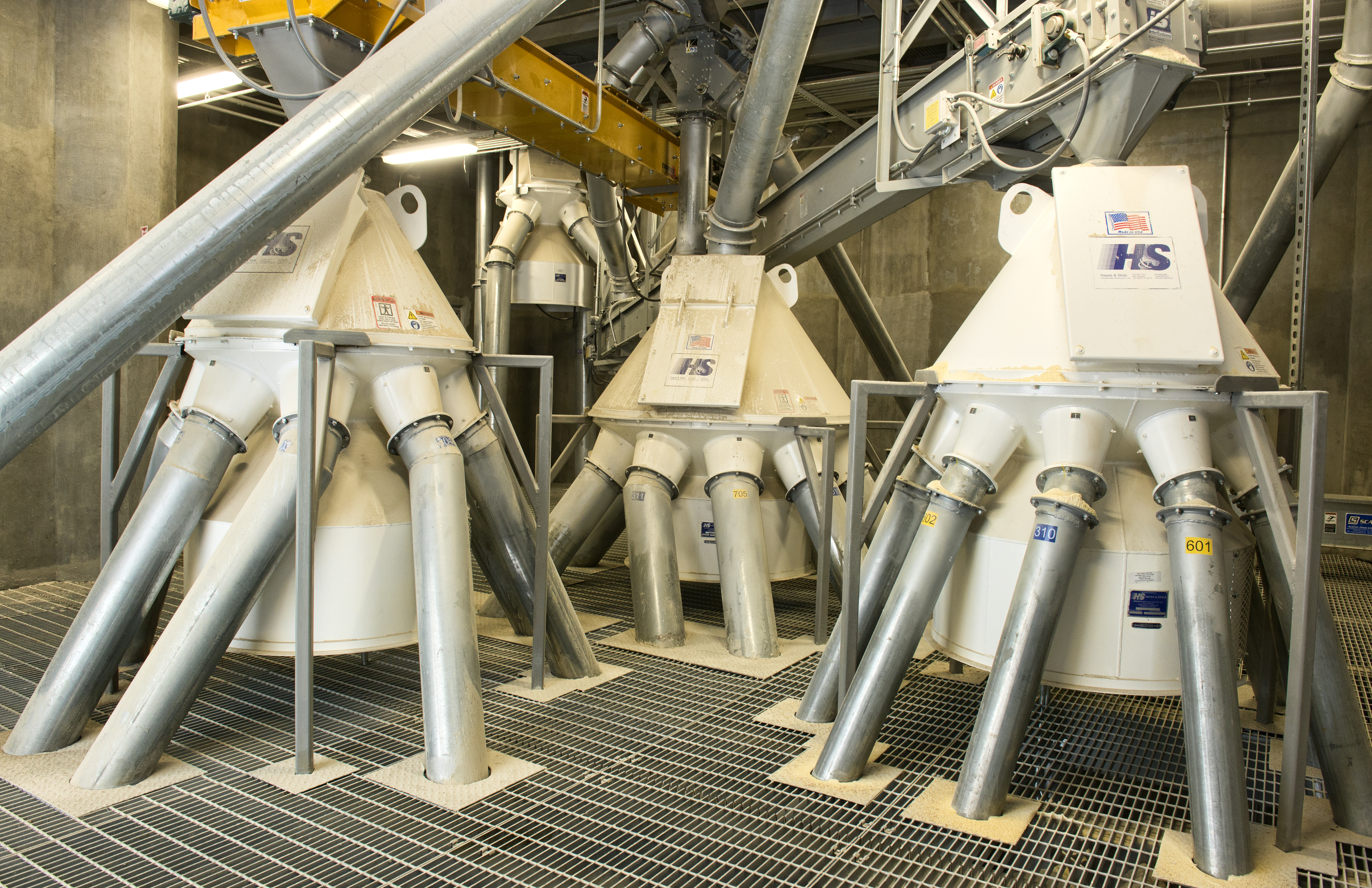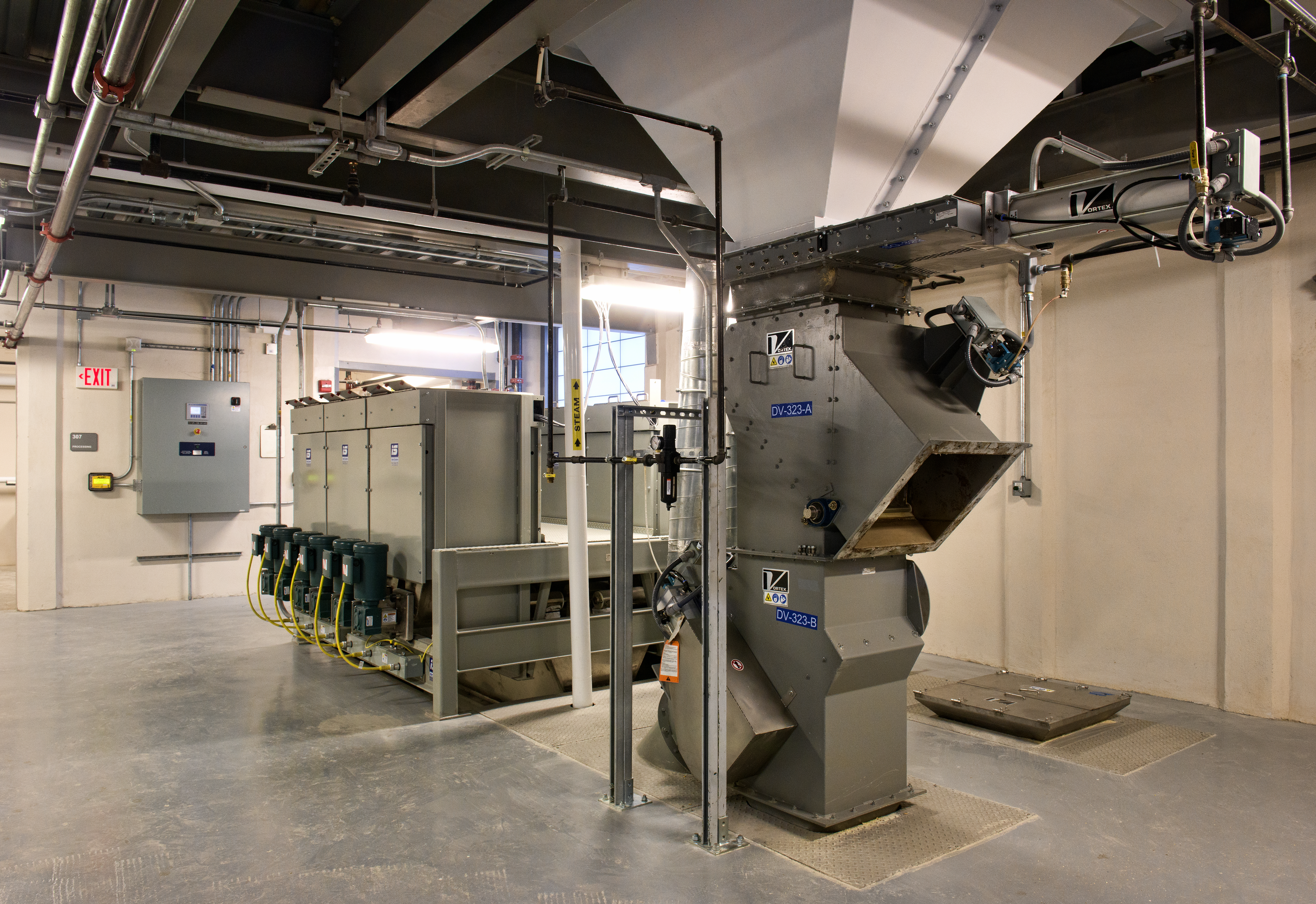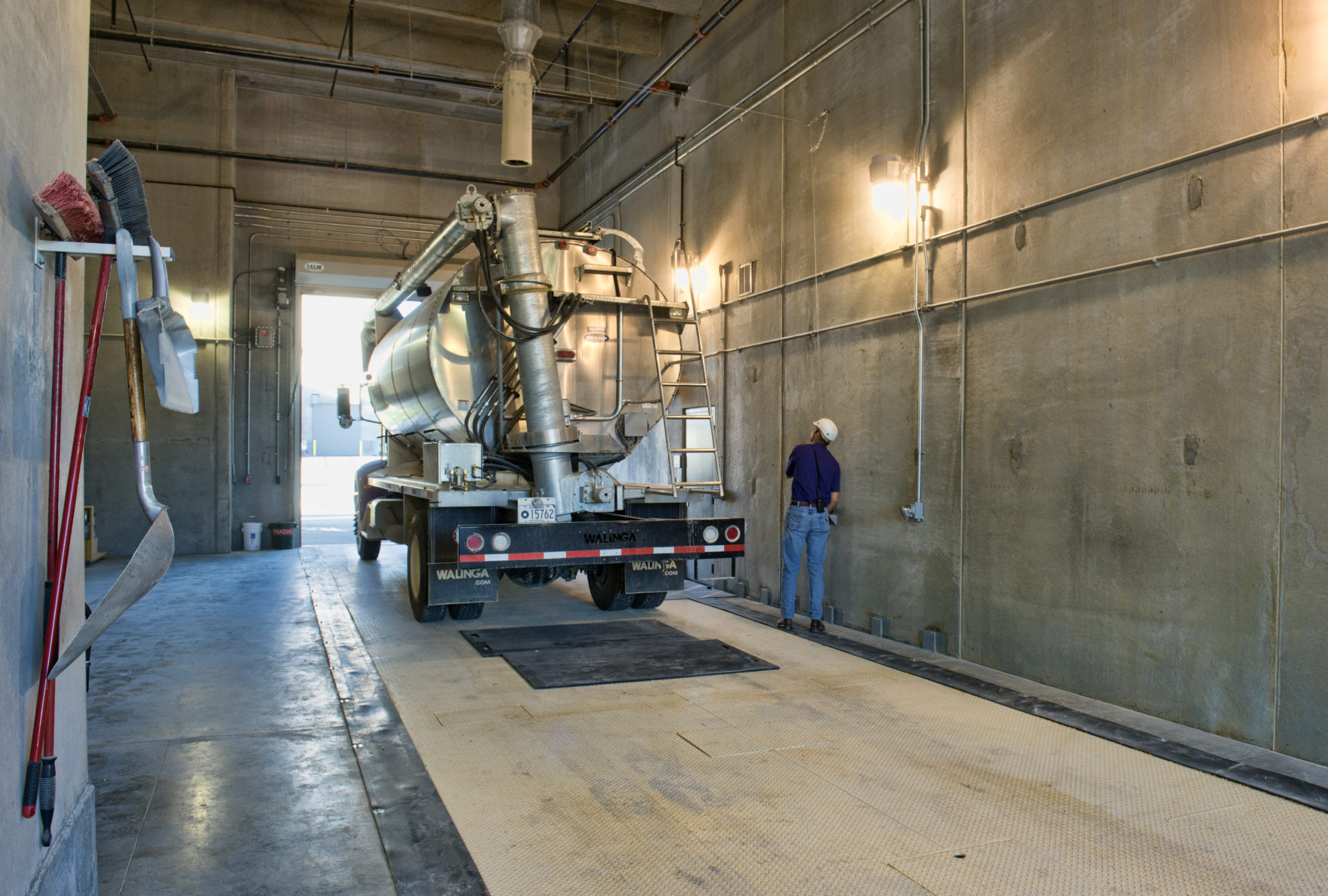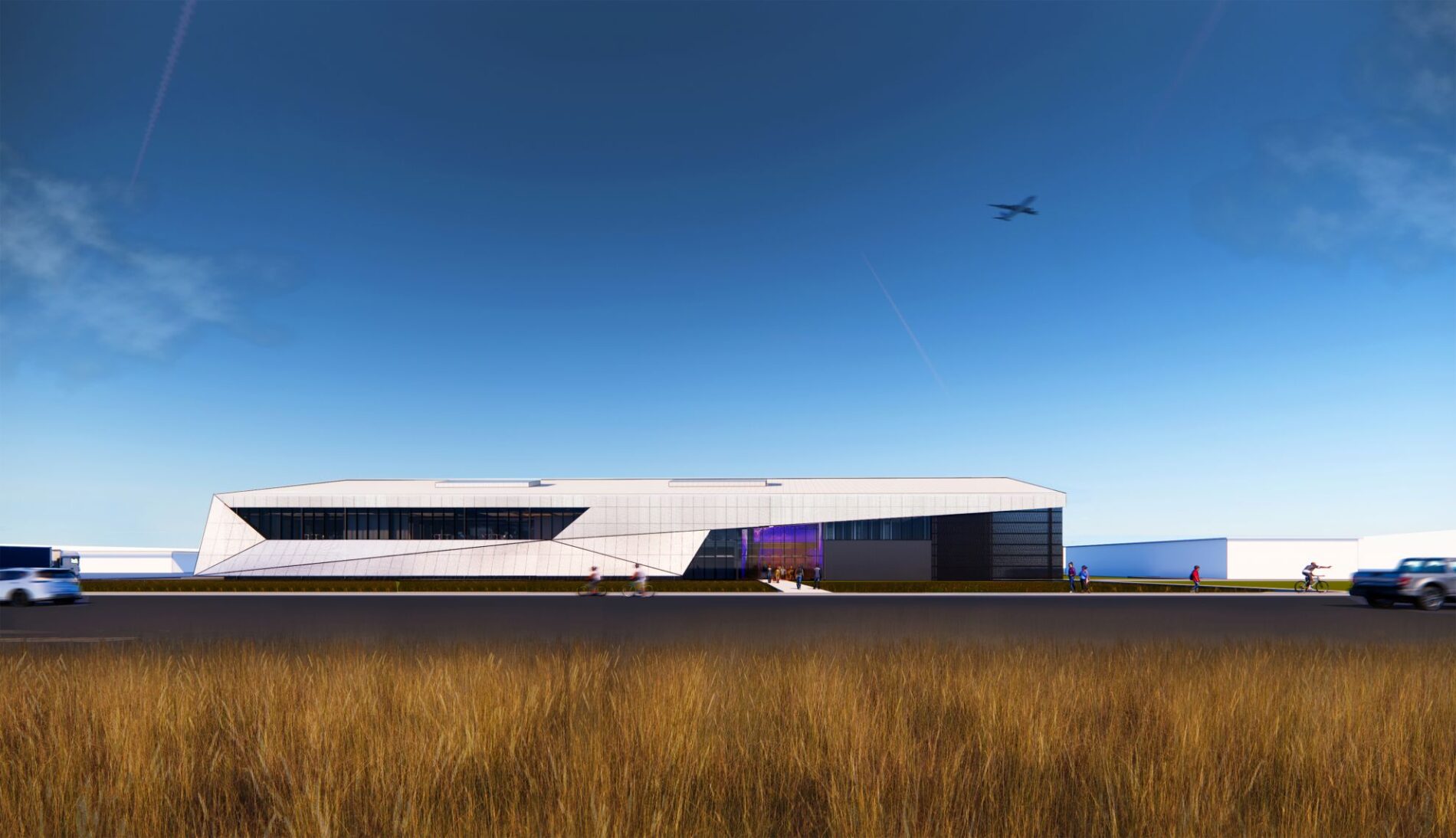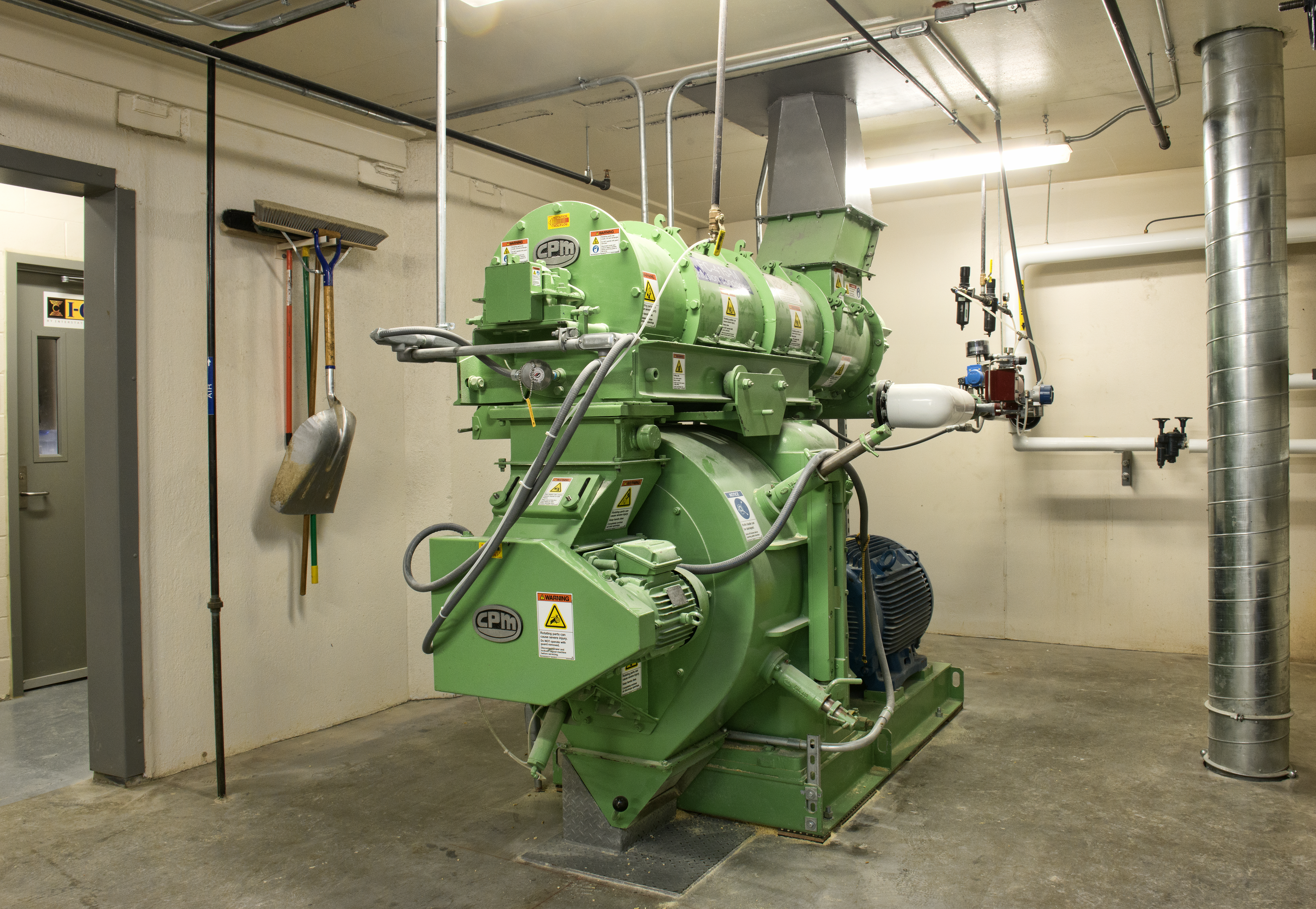
The Feed Technology Information Center was designed and constructed to produce all needed research feeds for the Department of Animal Science on its research farms, and to research (private and university) and teach feed-related programs. A total of approximately 6,000 tons of ingredients per year passes through the facility, most of which is finished feeds, though a significant portion is cleaned grain or other ingredients needed at the various animal facilities.
The facility’s design promotes flexibility to accommodate new equipment and developing equipment prototypes. In addition to the primary production, teaching, and research feed mill area, a smaller teaching and research feed mill area is embedded in the facility. This area is designated as a BSL-2 (BioSafety Level-2) facility that allows controlled research with low-level pathogenic organisms such as Salmonella and E-coli. Currently, there are no facilities of any significant scale in the U.S. that can conduct such research.

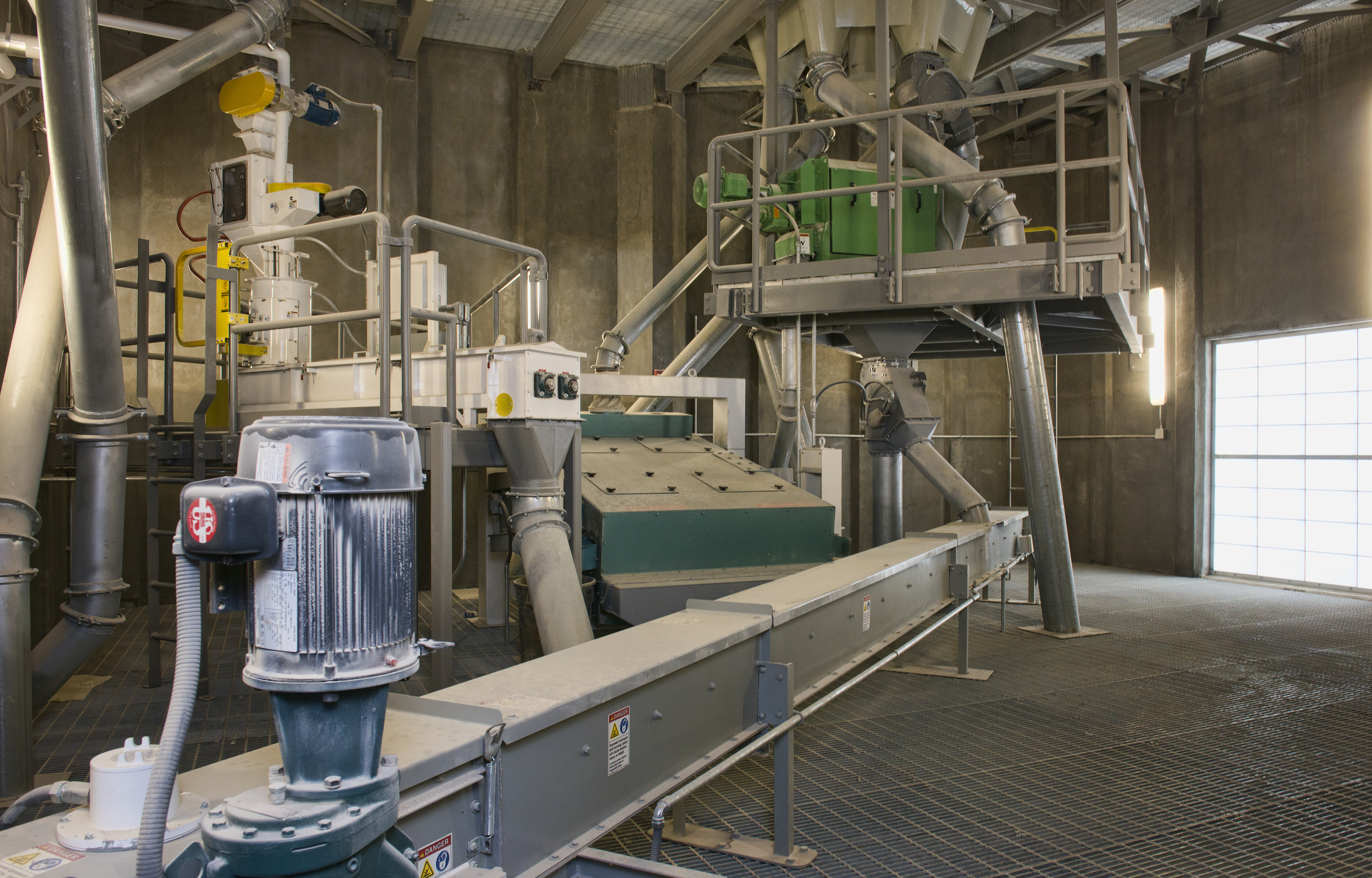
The facility’s feed mill tower was constructed using a slip-form concrete process. The concrete was continuously poured, 24 hours a day, for more than one week until the entire tower was constructed. The concrete tower rises more than 150 feet.



